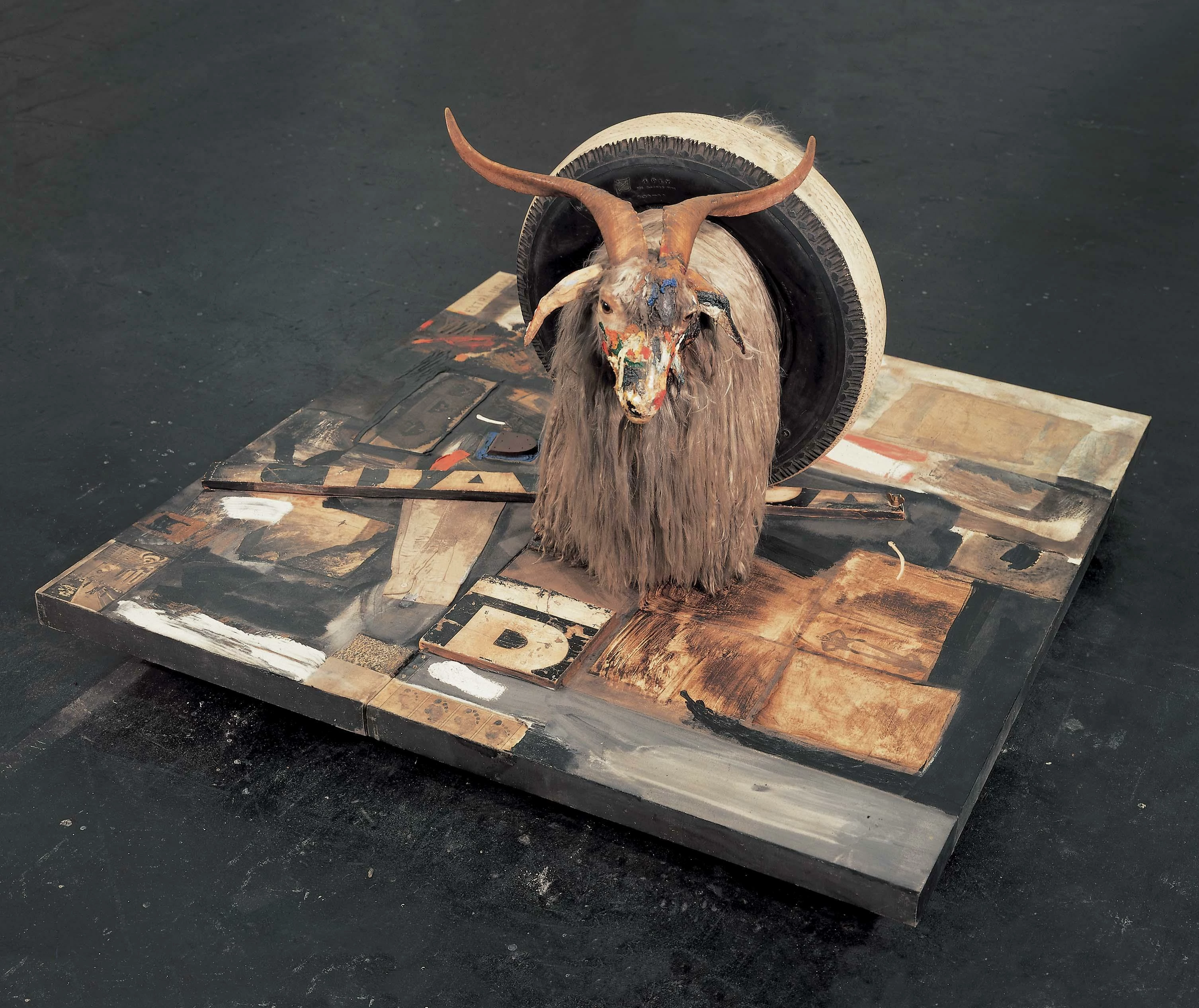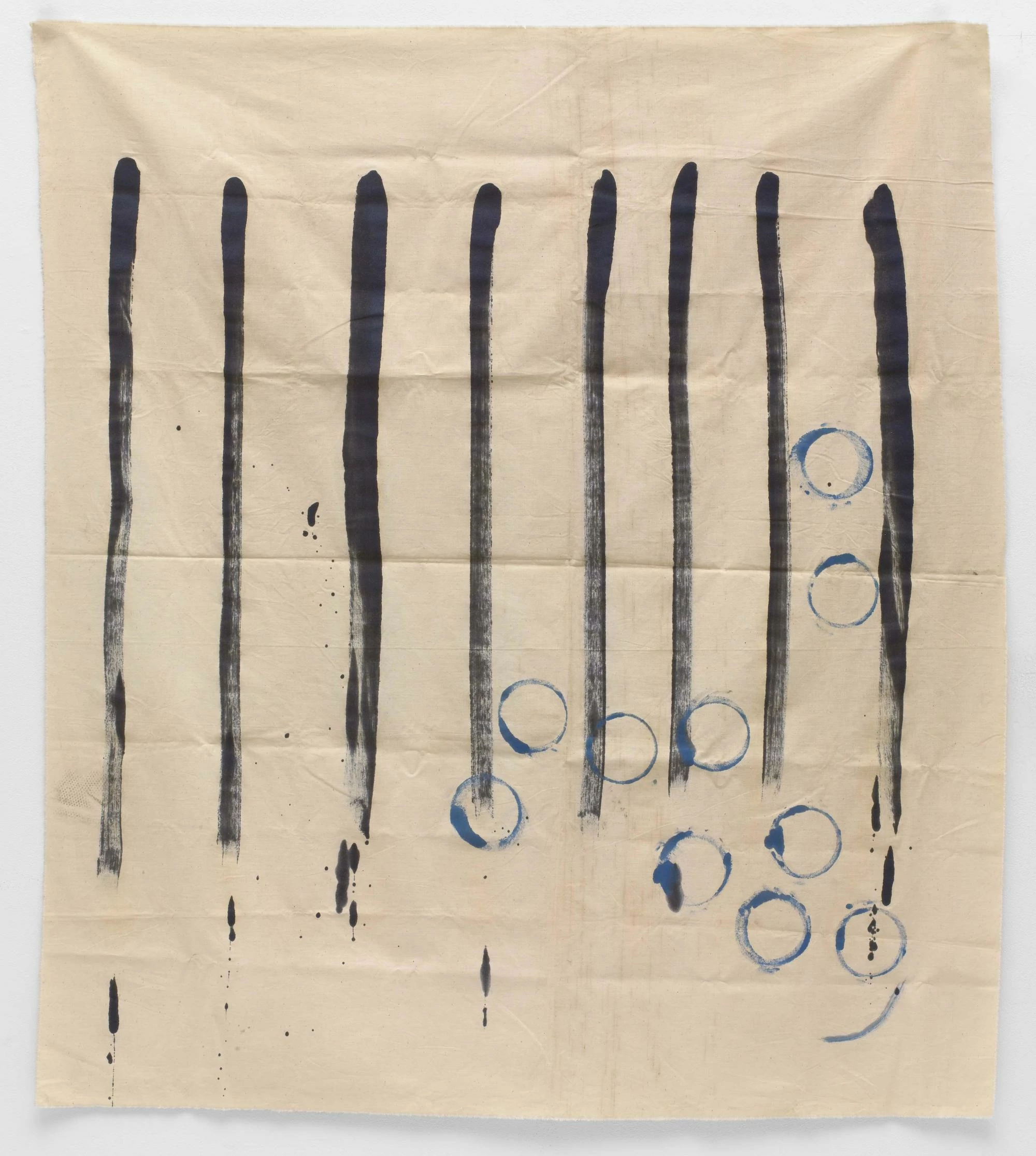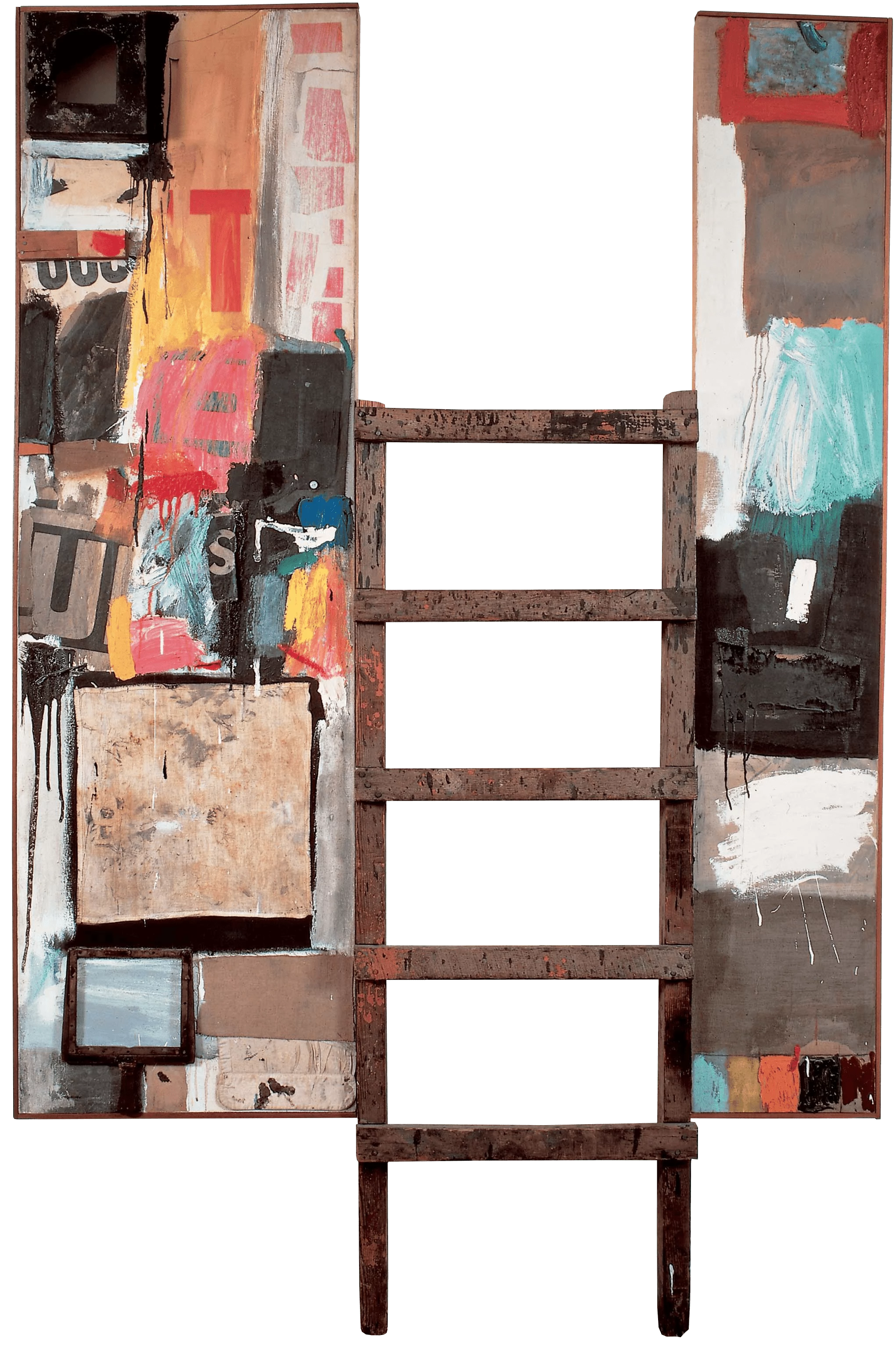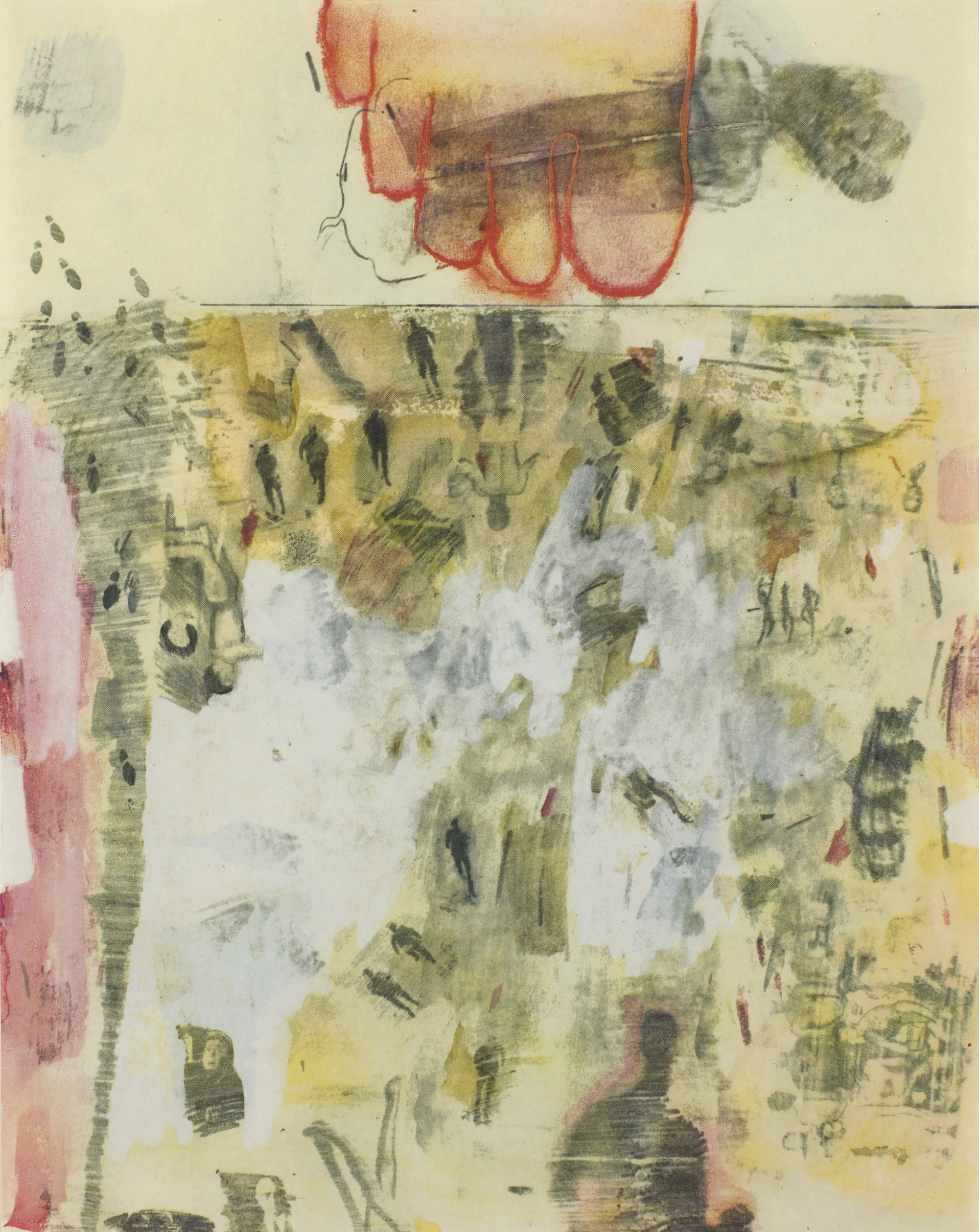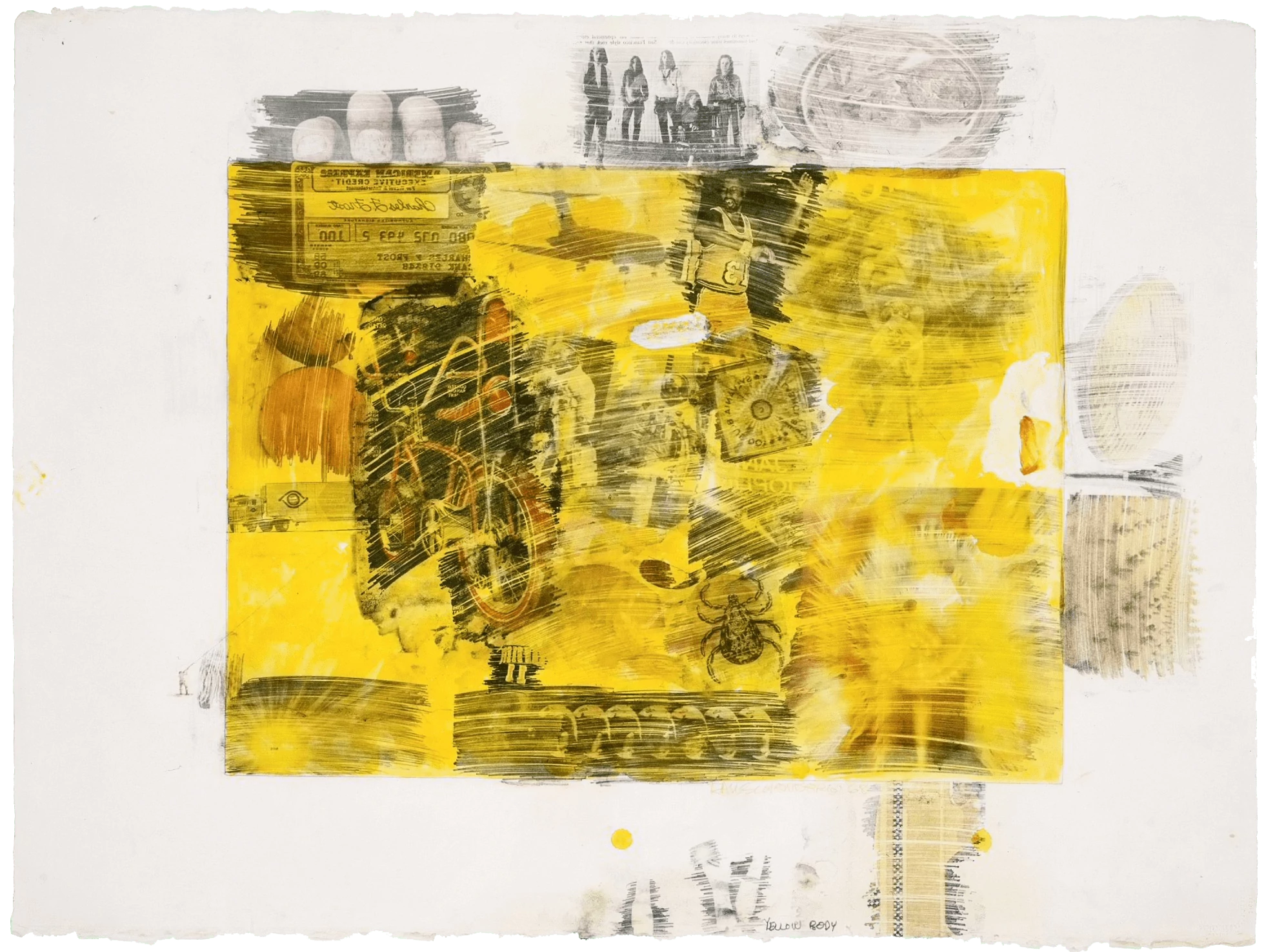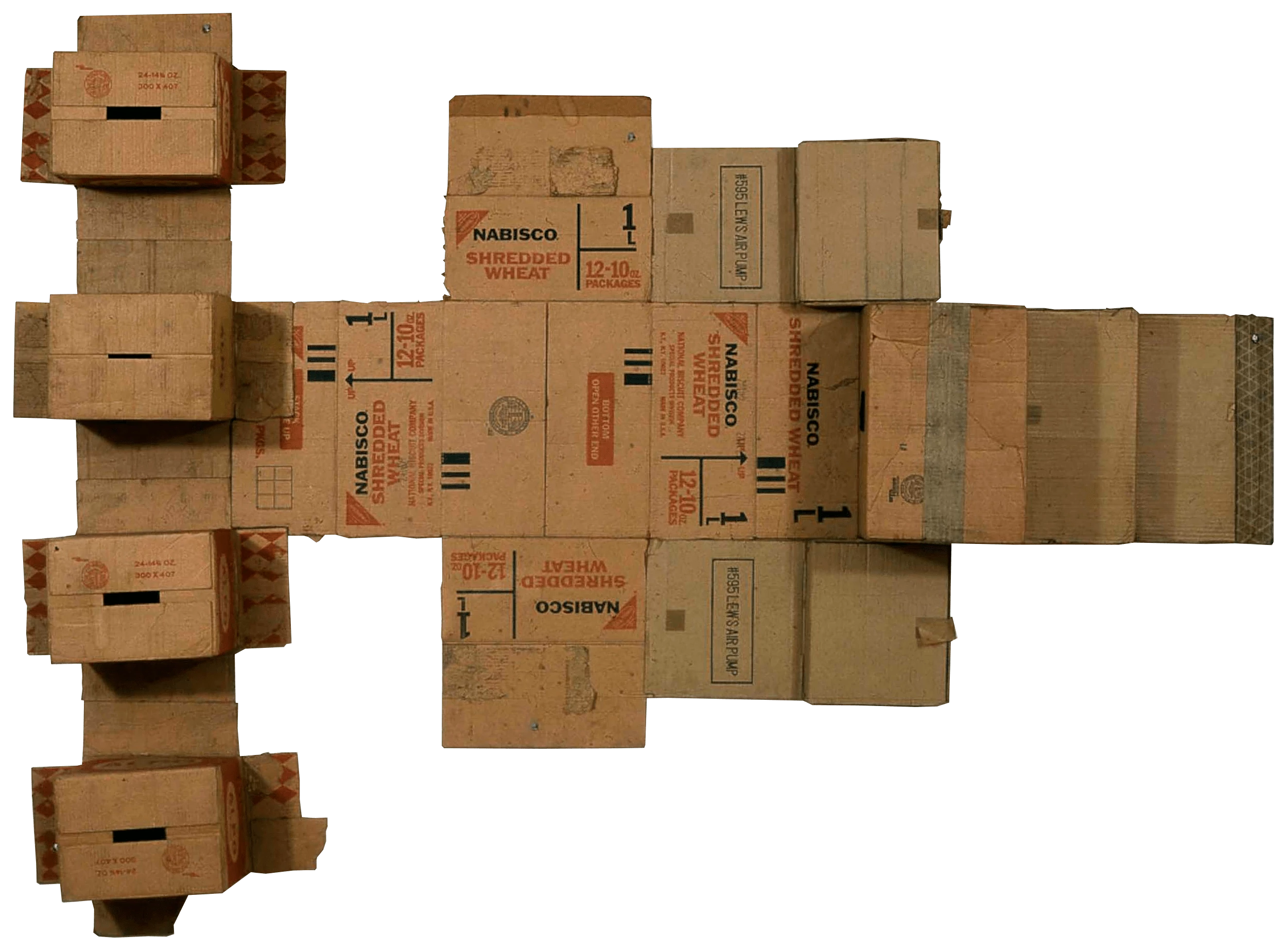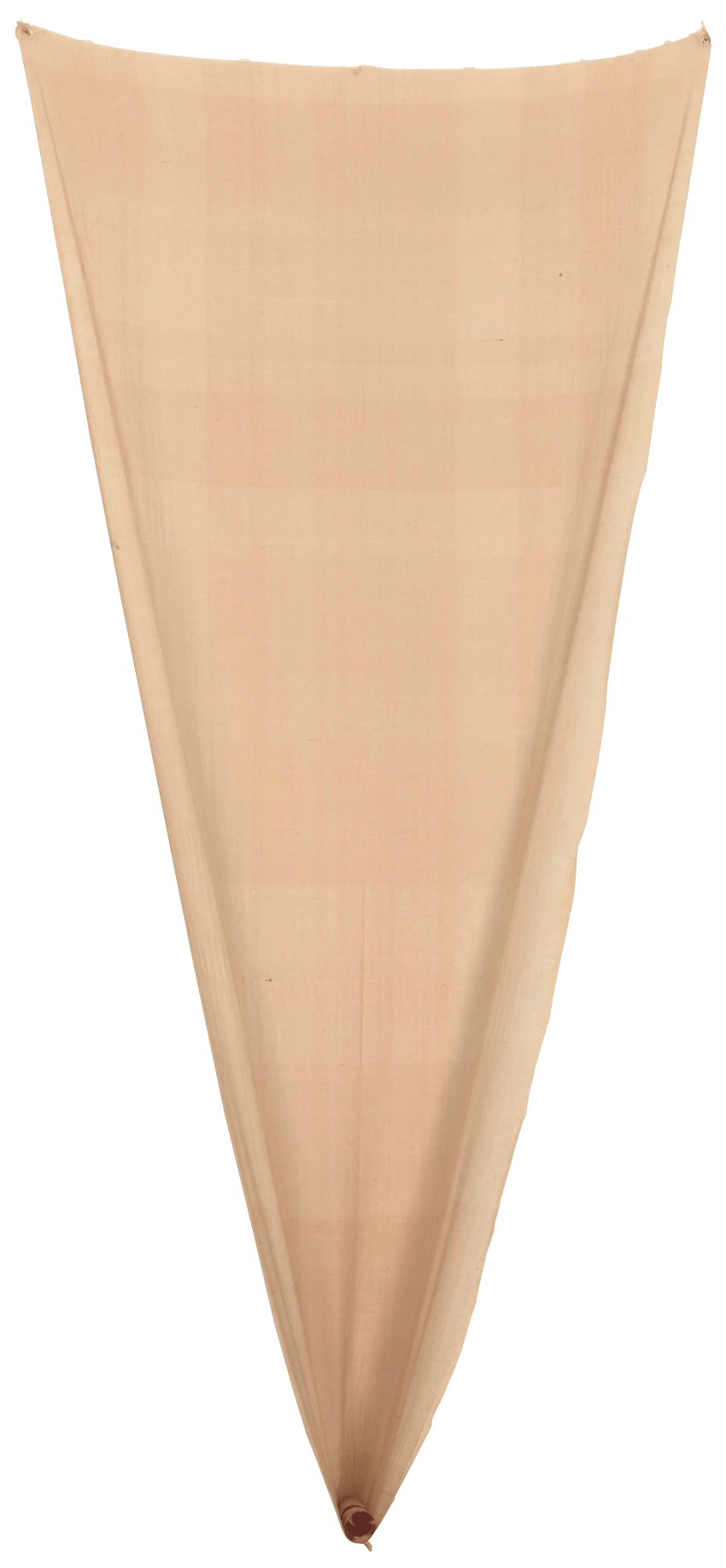Robert Rauschenberg was born at the beginning of the Great Depression to a family of devout Christians in the oil-slick town of Port Arthur, Texas. He grew up fast. A smart, dyslexic, closeted gay man who went to the University of Texas at 16, served in the Navy, and studied at the famed French art school Académie Julian before he turned 25.
In 1948 Rauschenberg signed up to attend Black Mountain College, an experimental college and talent-furnace. His program of rigorous artistic practice and theory was run by the very strict, very German, ex-bauhaus Josef Albers. Albers was a devout abstract modernist, and was known to say “when you're in school, you're not an artist, you're a student.” This philosophy went over poorly with young Rauschenberg, who already had his fill of rigid fundamentalism. The next decades saw Rauschenberg attack formal modernism with a gritty personal brand of humor, bold color and interesting-looking trash.
Rauschenberg’s most well known work are his combines, where his abstract expressionist paintings are applied to sculptural forms: a bed hung on the wall, or a goat wearing a tire. The absurdism earned him the label of Neo-Dadist, harking back to the volitile art-weirdos of the turn of the century. And Rauschenberg leaned into the role of provocateur, when asked to contribute a portrait of art-buyer Iris Clert to her gallery in Paris, Rauschenberg sent a telegram to the gallery declaring “This is a portrait of Iris Clert if I say so.”
Portrait: Copyright David Seidner Archive


